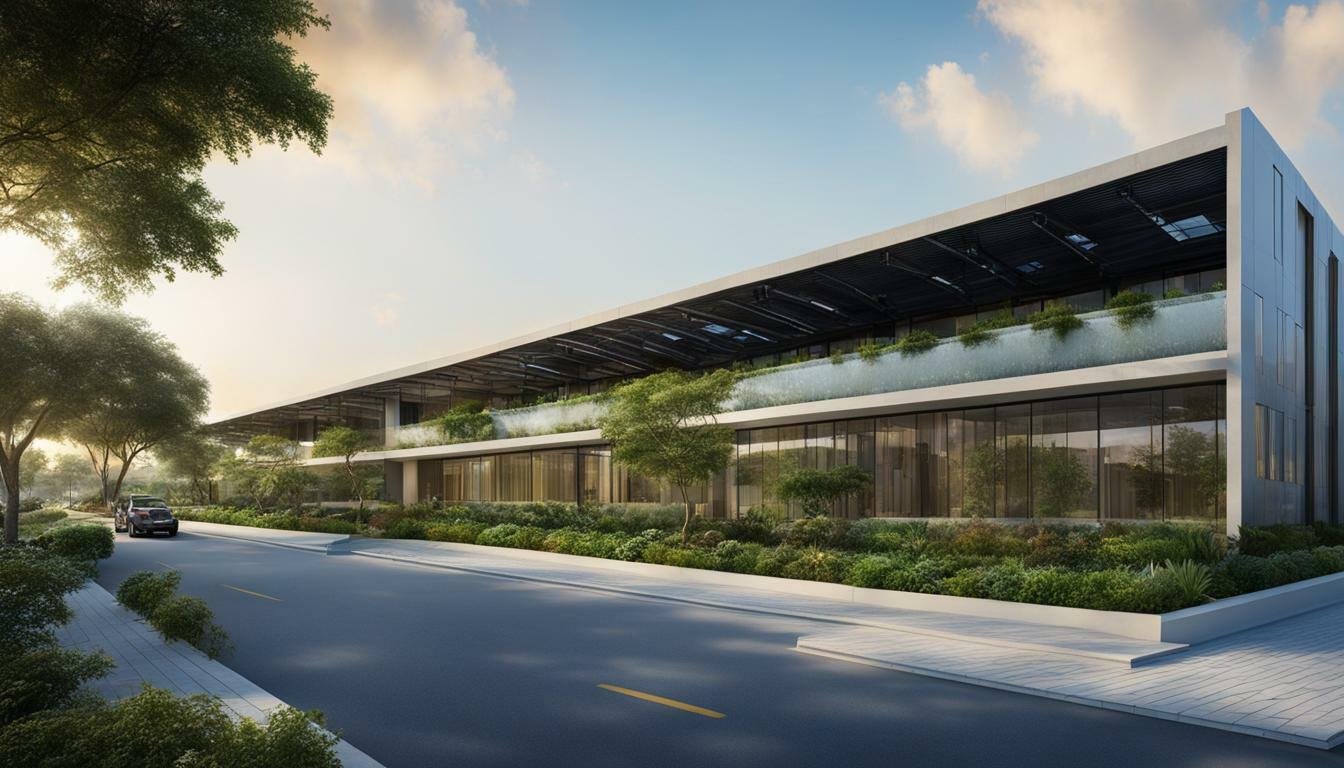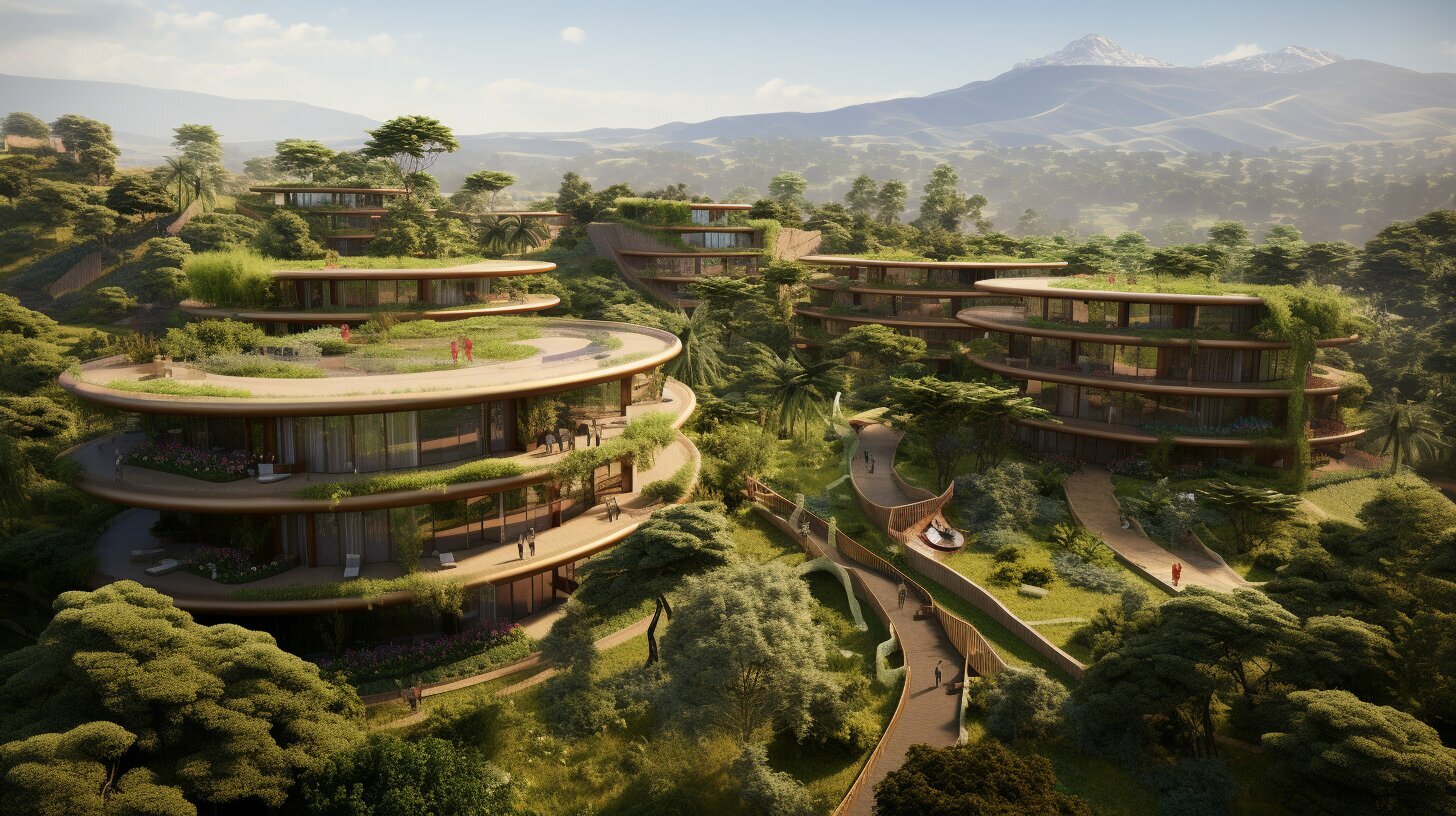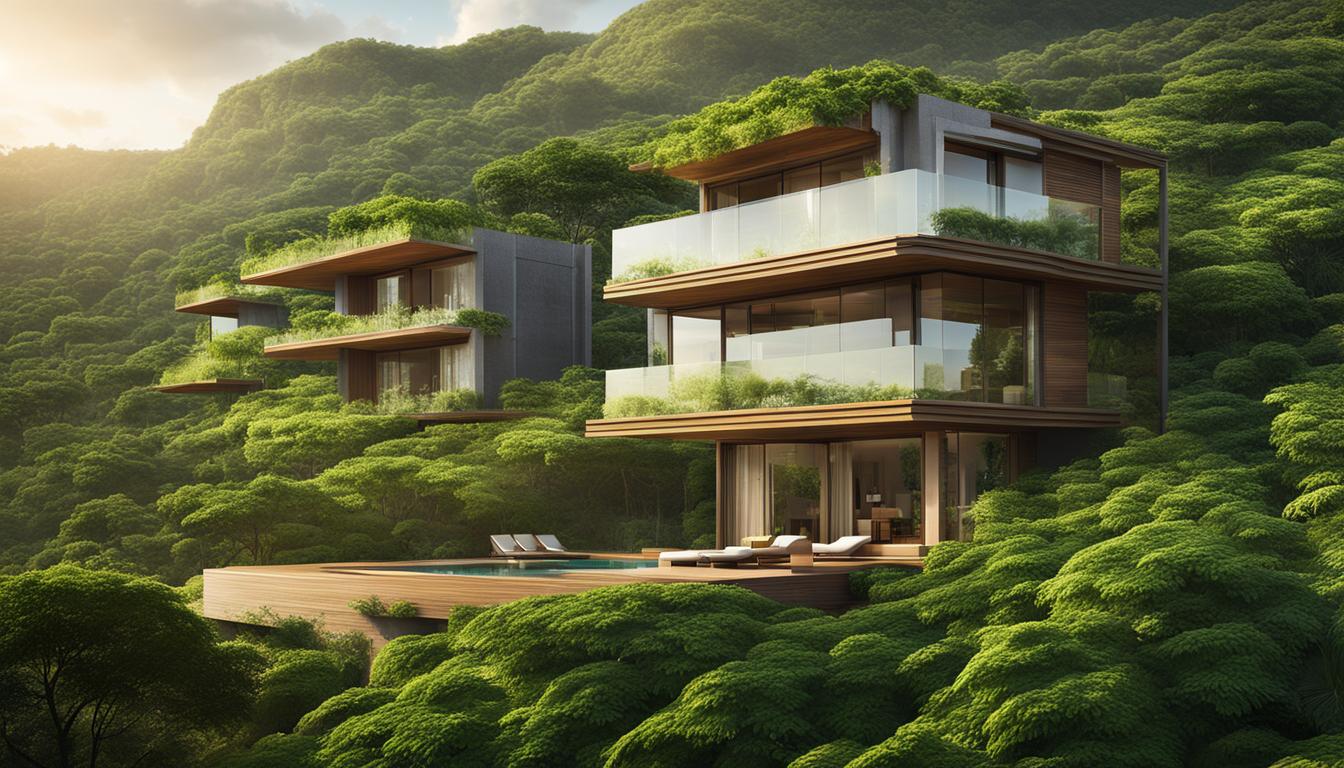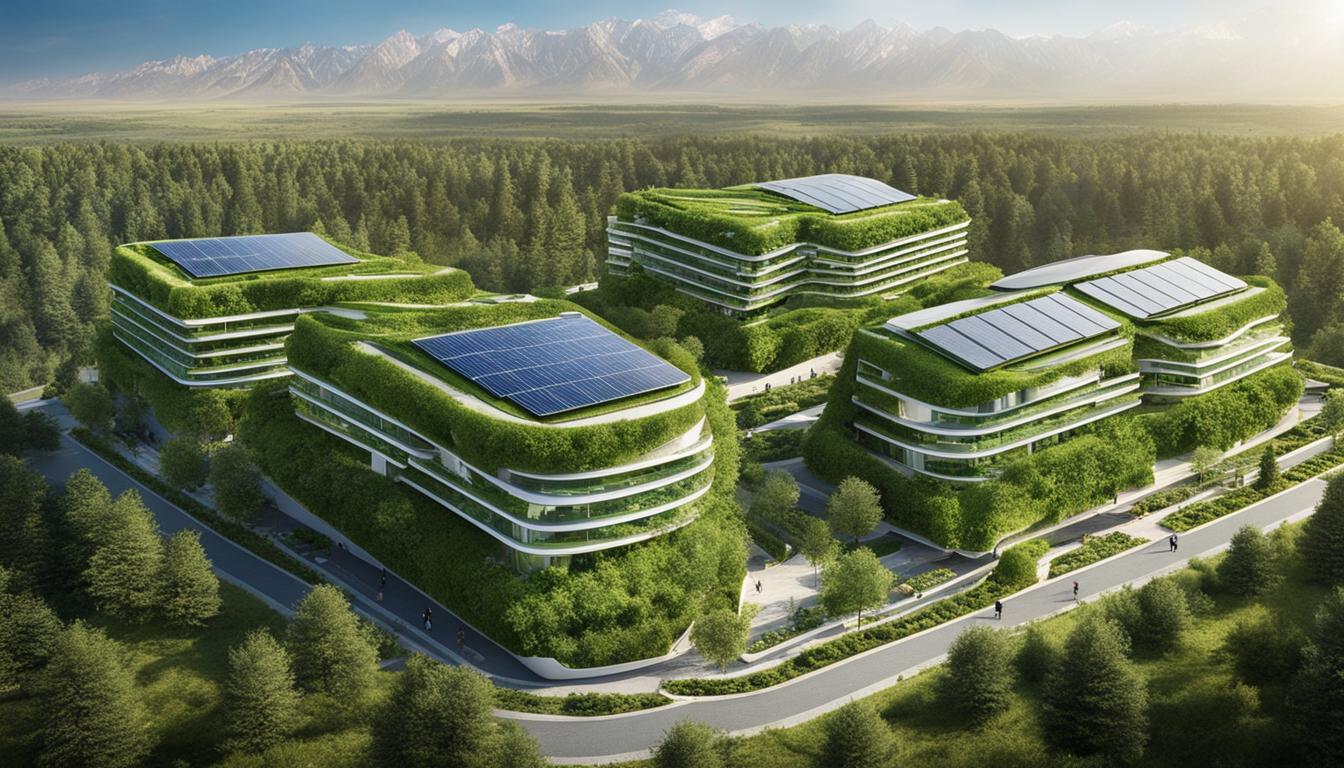Discover the Innovation of Belgium Green Building Practices
Belgium is renowned for its innovative green building practices, which have gained significant attention in recent years. The country has taken great strides towards sustainability, focusing on energy efficiency, renewable resources, and environmentally friendly construction methods. This article will explore the key elements that make Belgium a leader in green building practices.
One of the standout features of Belgium’s green building practices is its emphasis on energy efficiency. The country has implemented strict energy performance standards for buildings, encouraging architects and engineers to design structures that consume minimal energy. This includes integrating energy-efficient insulation, high-performance windows, and advanced ventilation systems into building designs. In addition, Belgium promotes the use of renewable energy sources such as solar panels and geothermal heating systems, further reducing the environmental impact of buildings.
Furthermore, Belgium has made significant progress in reducing carbon emissions through sustainable construction materials and techniques. The use of eco-friendly materials, such as recycled and locally sourced materials, is prioritised in construction projects. Additionally, innovative construction methods that minimise waste and promote recycling are encouraged. For instance, Belgium has implemented the concept of “cradle-to-cradle” design, where materials are carefully selected and managed to ensure they can be reused at the end of their life cycle. This commitment to sustainable materials and construction practices has positioned Belgium as a global leader in green building.
Belgium’s green building practices also extend beyond new constructions to include renovations and retrofits. The country has implemented incentives and funding programs to encourage the conversion of existing buildings into more energy-efficient structures. This approach recognises the importance of maximising the energy-saving potential of existing buildings, rather than solely focusing on new constructions. By promoting retrofits, Belgium is ensuring that its building stock becomes greener and more sustainable over time.
In addition to energy efficiency and sustainable materials, Belgium places a strong emphasis on indoor environmental quality. Buildings are designed to provide occupants with a healthy and comfortable indoor environment. This includes factors such as natural daylighting, proper acoustics, and the use of low-toxicity materials. Belgium recognises that providing a pleasant indoor environment is essential for occupant well-being and productivity. Consequently, it has implemented guidelines and standards to ensure that buildings meet high indoor environmental quality standards.
To create a culture of sustainable building practices, Belgium has invested in educational initiatives and research programs. Universities and research institutions collaborate with industry professionals to develop innovative technologies, materials, and strategies. This interaction between academia and industry fosters ongoing advancements in green building practices.
Moreover, Belgium has established certification systems to recognise and promote sustainable buildings. One such system is the BREEAM (Building Research Establishment Environmental Assessment Methodology) certification, which assesses the environmental performance of buildings. This certification not only demonstrates a building’s sustainability credentials but also provides owners and occupants with tangible benefits, such as reduced operational costs and improved well-being.
Key Takeaways
- Belgium is a leader in green building practices, focusing on energy efficiency, sustainable materials, and indoor environmental quality.
- Sustainable construction materials and techniques, as well as retrofits and renovations, are prioritized in Belgium’s green building practices.
- Belgium invests in research, education, and certification systems to promote sustainable building practices and advancements in the field.
Emphasis on Energy Efficiency in Belgium’s Green Building Practices
Belgium is renowned for its innovative green building practices, which have gained significant attention in recent years. The country has taken great strides towards sustainability, focusing on energy efficiency, renewable resources, and environmentally friendly construction methods. This article will explore the key elements that make Belgium a leader in green building practices.
One of the standout features of Belgium’s green building practices is its emphasis on energy efficiency. The country has implemented strict energy performance standards for buildings, encouraging architects and engineers to design structures that consume minimal energy. This includes integrating energy-efficient insulation, high-performance windows, and advanced ventilation systems into building designs. In addition, Belgium promotes the use of renewable energy sources such as solar panels and geothermal heating systems, further reducing the environmental impact of buildings.
This focus on energy efficiency has resulted in impressive energy savings for buildings in Belgium. According to the European Environment Agency, buildings in Belgium consume 48% less energy than the EU average. This achievement is a testament to the country’s commitment to reducing its carbon footprint through sustainable building practices.

Architects in Belgium are also exploring innovative design strategies to maximize energy efficiency. For example, many buildings in the country incorporate passive design principles, which rely on natural heating and cooling processes rather than mechanical systems. By orienting buildings to face the sun and incorporating shading devices, architects can reduce the need for artificial heating and cooling systems.
Belgium is also home to several green architecture firms, such as Jaspers-Eyers Architects and Vincent Callebaut Architectures. These firms specialize in designing highly energy-efficient and sustainable buildings, using materials and technologies that minimize environmental impact.
Through its emphasis on energy efficiency, Belgium is leading the way in green building practices. Its commitment to sustainable construction and design not only benefits the environment but also provides tangible benefits for building owners and occupants, such as reduced energy bills and improved indoor environmental quality.
Sustainable Construction Materials and Techniques in Belgium
Furthermore, Belgium has made significant progress in reducing carbon emissions through environmentally friendly construction practices. The country prioritizes the use of sustainable building materials, such as recycled and locally sourced materials, in construction projects. For instance, wood is widely utilized in building construction, as it is a renewable resource with a low carbon footprint.
Belgium also encourages innovative construction methods that reduce waste and promote recycling. The concept of “cradle-to-cradle” design has been adopted, where materials are carefully selected and managed to ensure that they can be reused at the end of their life cycle. This approach has not only reduced waste but also has led to the development of new and innovative building materials and techniques.

The country has also invested in research and development of new sustainable building materials and techniques. Researchers have made significant advancements in areas such as sustainable concrete, which uses less energy and produces fewer emissions during its production process. Furthermore, Belgium has implemented regulations on the use of hazardous materials in building construction, which has led to healthier indoor environments for building occupants.
Sustainable Design Belgium: Retrofits and Renovations in Belgium’s Green Building Practices
Belgium’s green building practices also extend beyond new constructions to include renovations and retrofits. The country has implemented incentives and funding programs to encourage the conversion of existing buildings into more energy-efficient structures. This approach recognizes the importance of maximizing the energy-saving potential of existing buildings, rather than solely focusing on new constructions. By promoting retrofits, Belgium is ensuring that its building stock becomes greener and more sustainable over time.
One of the key features of Belgium’s retrofits and renovations is the prioritization of sustainable materials and techniques. The use of eco-friendly materials and innovative construction methods are encouraged to minimize waste and promote recycling.
Belgium’s government has also implemented various funding programs and incentives aimed at encouraging property owners to invest in energy-efficient retrofitting. For instance, the “Green Loans” program offers low-interest loans to property owners to fund energy efficiency upgrades, while the “Green Premium” scheme provides grants for energy-saving measures such as insulation and ventilation.
Another innovative approach to retrofits in Belgium is the concept of “passive housing.” Passive housing involves retrofitting buildings to become self-sufficient in terms of heating and cooling. This is achieved by incorporating features such as high-performance insulation, airtight building envelopes, and mechanical ventilation systems. The result is buildings that require minimal energy to maintain comfortable indoor temperatures, regardless of external weather conditions.
The focus on sustainable retrofits and renovations in Belgium’s green building practices has resulted in significant energy savings and reduced carbon emissions. By prioritizing the retrofitting of existing buildings, Belgium is reducing the environmental impact of its building stock while also improving the health and well-being of occupants.

“Belgium’s focus on sustainable retrofits and renovations is a testament to the country’s commitment to green building practices. By encouraging property owners to invest in energy-efficient upgrades and incorporating innovative construction methods, Belgium is positioning itself at the forefront of sustainable building.”
Indoor Environmental Quality in Belgium’s Green Buildings
In addition to energy efficiency and sustainable materials, Belgium places a strong emphasis on indoor environmental quality. Buildings are designed to provide occupants with a healthy and comfortable indoor environment. This includes factors such as natural daylighting, proper acoustics, and the use of low-toxicity materials. Belgium recognizes that providing a pleasant indoor environment is essential for occupant well-being and productivity. Consequently, it has implemented guidelines and standards to ensure that buildings meet high indoor environmental quality standards.
Green building companies in Belgium incorporate a range of measures to enhance indoor environmental quality. One of the key strategies is to maximize natural daylighting, which has been shown to reduce eye strain, headaches, and even seasonal affective disorder. Green buildings in Belgium also implement advanced ventilation systems to improve indoor air quality. These systems reduce the concentrations of indoor pollutants and odors, providing fresh air to occupants. Moreover, low-toxicity materials are used in the construction of green buildings, which have a lower off-gassing potential and contribute to better indoor air quality.
Proper acoustics are also critical to the indoor environmental quality of buildings. Green building companies in Belgium implement measures to minimize noise pollution, making buildings more conducive to work and study. These measures may include strategic placement of windows and doors, use of sound-absorbing materials, and implementation of technologies such as white noise machines.
Green buildings in Belgium are also designed with occupant comfort in mind. The use of technological advancements such as smart thermostats, which adjust temperature and humidity levels according to occupant needs, and ergonomic furniture, which reduces physical discomfort and stress, are becoming increasingly prevalent. The emphasis on indoor environmental quality in Belgium’s green buildings is a testament to the country’s commitment to creating a sustainable, healthy built environment.

Sustainable Design Belgium: Research, Education, and Certifications in Belgium’s Green Building Practices
To create a culture of sustainable building practices, Belgium has invested in educational initiatives and research programs. The country’s universities and research institutions partner with industry professionals to develop innovative technologies, materials, and strategies for sustainable design in Belgium. These partnerships help bridge the gap between academia and industry, fostering ongoing advancements in green building practices.
Belgium’s commitment to sustainability is reflected in its research programs, which focus on developing new technologies and materials that prioritize energy efficiency and environmental performance. For example, the country has invested in research programs aimed at developing new insulation materials, energy-efficient lighting systems, and advanced ventilation techniques. By supporting research on sustainable design in Belgium, the country is fostering a culture of innovation that will advance the field of green building.
Education is also a key component of Belgium’s green building practices. The country’s universities offer courses and degrees in sustainable design, architecture, and engineering. Students learn about energy-efficient building techniques, sustainable materials, and indoor environmental quality. In addition, Belgium has established training programs and workshops for professionals in the building industry to improve their knowledge of sustainable design in Belgium. By prioritizing education, the country is promoting the adoption of sustainable building practices across all sectors of the industry.
Belgium has also established certification systems to recognize and promote sustainable buildings. One such system is the BREEAM (Building Research Establishment Environmental Assessment Methodology) certification, which assesses the environmental performance of buildings. This certification not only demonstrates a building’s sustainability credentials but also provides owners and occupants with tangible benefits, such as reduced operational costs and improved well-being. By establishing certification systems, Belgium is encouraging the adoption of sustainable building practices and rewarding those who invest in sustainability.

Through its investment in research, education, and certification programs, Belgium has established itself as a leader in sustainable building practices. The country’s partnerships between academia and industry, along with its focus on innovative technologies and materials, have set a precedent for other countries to follow. By prioritizing sustainability in building design and retrofit projects, Belgium is promoting sustainable development and setting an example for the rest of the world.
Conclusion
In conclusion, Belgium’s green building practices are characterized by a strong focus on energy efficiency, sustainable materials, indoor environmental quality, and a commitment to ongoing research and education. The country has taken significant strides towards sustainability, implementing strict energy performance standards, promoting renewable energy sources and sustainable construction materials, and providing occupants with a healthy and comfortable indoor environment. Belgium’s investment in educational initiatives, research programs, and certification systems have propelled it to the forefront of green building innovation, setting an example for other countries to follow. By prioritizing sustainability in construction and retrofit projects, Belgium is contributing towards a greener and more sustainable future.
FAQ
Q: What makes Belgium a leader in green building practices?
A: Belgium is renowned for its emphasis on energy efficiency, sustainable construction materials, indoor environmental quality, and ongoing research and education initiatives.
Q: How does Belgium prioritize energy efficiency in its green building practices?
A: Belgium implements strict energy performance standards, integrates energy-efficient insulation, high-performance windows, and advanced ventilation systems into building designs, and promotes the use of renewable energy sources.
Q: What sustainable materials and techniques does Belgium use in its green building practices?
A: Belgium prioritizes eco-friendly materials such as recycled and locally sourced materials, encourages innovative construction methods that minimize waste and promote recycling, and implements “cradle-to-cradle” design principles.
Q: Does Belgium focus on retrofits and renovations in its green building practices?
A: Yes, Belgium has implemented incentives and funding programs to encourage the conversion of existing buildings into more energy-efficient structures.
Q: How does Belgium ensure indoor environmental quality in its green buildings?
A: Belgium designs buildings to provide occupants with a healthy and comfortable indoor environment, including factors such as natural daylighting, proper acoustics, and the use of low-toxicity materials.
Q: What investments has Belgium made in research, education, and certifications for green building practices?
A: Belgium collaborates with universities and research institutions to develop innovative technologies, materials, and strategies. It has also established certification systems such as BREEAM to recognize and promote sustainable buildings.








